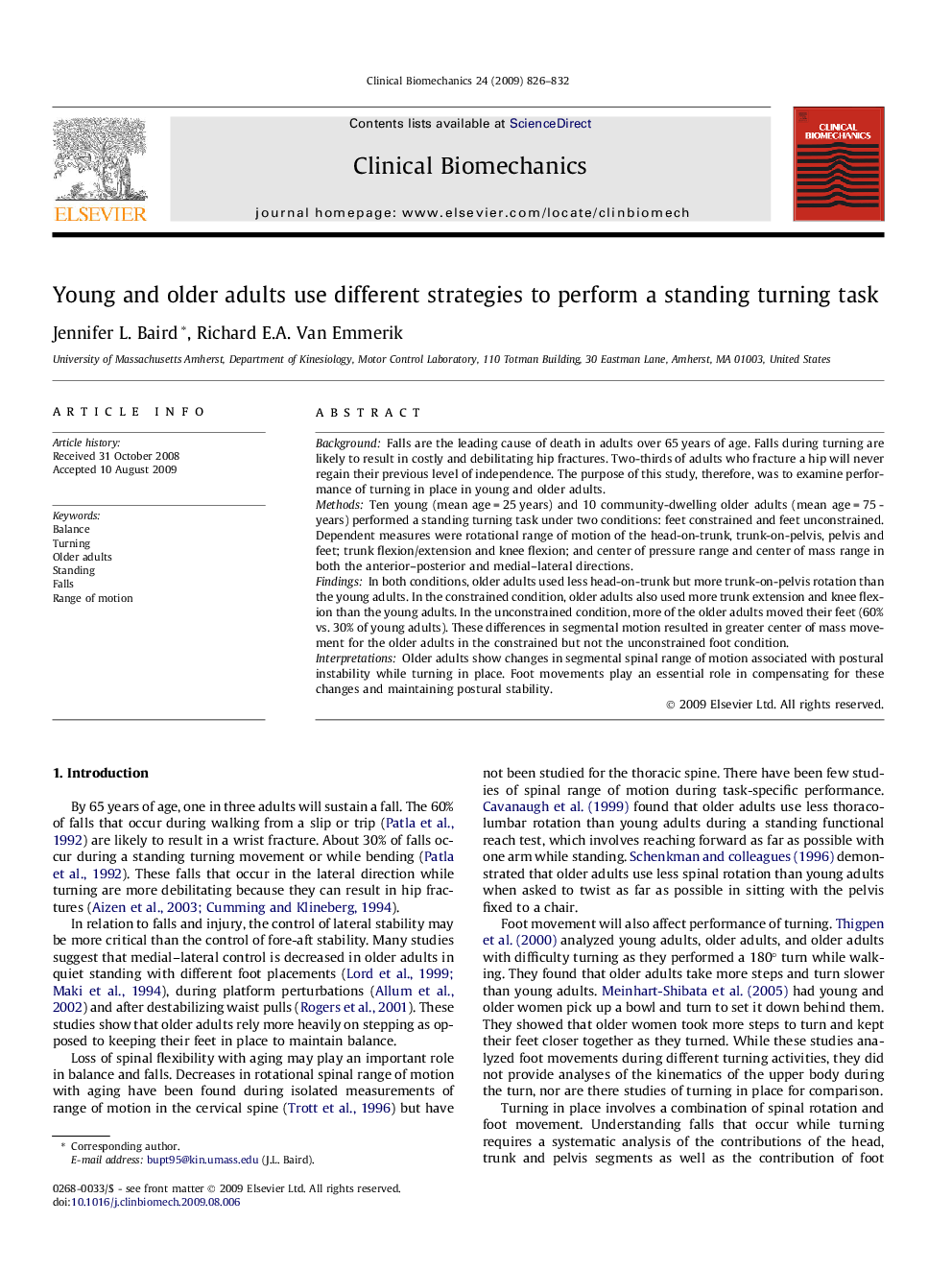| کد مقاله | کد نشریه | سال انتشار | مقاله انگلیسی | نسخه تمام متن |
|---|---|---|---|---|
| 4050680 | 1264951 | 2009 | 7 صفحه PDF | دانلود رایگان |

BackgroundFalls are the leading cause of death in adults over 65 years of age. Falls during turning are likely to result in costly and debilitating hip fractures. Two-thirds of adults who fracture a hip will never regain their previous level of independence. The purpose of this study, therefore, was to examine performance of turning in place in young and older adults.MethodsTen young (mean age = 25 years) and 10 community-dwelling older adults (mean age = 75 years) performed a standing turning task under two conditions: feet constrained and feet unconstrained. Dependent measures were rotational range of motion of the head-on-trunk, trunk-on-pelvis, pelvis and feet; trunk flexion/extension and knee flexion; and center of pressure range and center of mass range in both the anterior–posterior and medial–lateral directions.FindingsIn both conditions, older adults used less head-on-trunk but more trunk-on-pelvis rotation than the young adults. In the constrained condition, older adults also used more trunk extension and knee flexion than the young adults. In the unconstrained condition, more of the older adults moved their feet (60% vs. 30% of young adults). These differences in segmental motion resulted in greater center of mass movement for the older adults in the constrained but not the unconstrained foot condition.InterpretationsOlder adults show changes in segmental spinal range of motion associated with postural instability while turning in place. Foot movements play an essential role in compensating for these changes and maintaining postural stability.
Journal: Clinical Biomechanics - Volume 24, Issue 10, December 2009, Pages 826–832